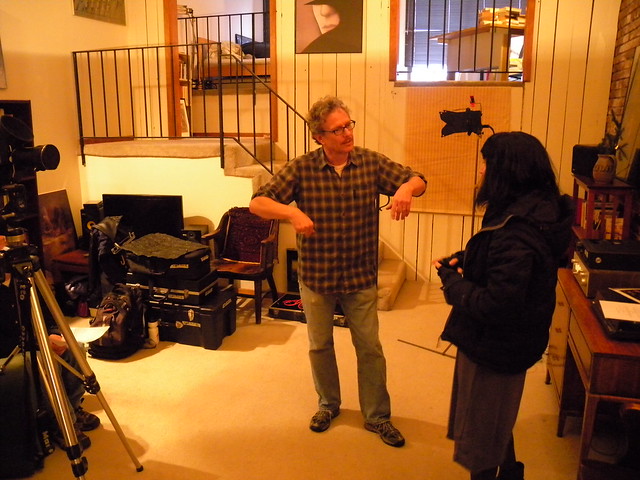
Image Credit: blendersfun
As speakers, we know that if we want to give a good speech we need to take the time to prepare for it. This means that we need to create a theme for our speech, we need to create a great opening, work in some physical gestures, and include the proper amount of vocal variety. However, even after doing all of that, we might not be successful. It turns out that your audience will be forming an impression of you within the first 12 seconds of seeing you. Even worse, they probably won’t change their impression of you even after they know you for a bit. How can a speaker make a good first impression?
How Do You Approach The Stage?
The first impression that any audience is going to have of you is how you choose to approach the stage. You have two basic ways to do this. The first is where you remain in your seat while you are being introduced. Once the introduction has been completed, you can get up from your seat and move to the front of the room. Alternatively, you can enter the front of the room from the side, perhaps from an adjoining room. No matter how you choose to do it, if you put some energy in to your stride as you come to the front, then your audience will get the message that you are excited about addressing them.
The Introduction
When we give a speech, more often than not we are introduced by someone before we begin to speak. This will be the first time that your audience has had a chance to lay eyes on you. You are going to want to shake hands with the person who just got done introducing you. Do this by extending your hand a few steps before you connect with the person who introduced you. By doing this you will be creating the impression that you are in control of the moment and eager to begin your speech. Make sure that you smile at your introducer in order to show that you are happy to be speaking.
Where You Stand
Often when we are giving a speech we are provided with a lectern. These can be handy if you are nervous about giving a speech because they provide you with something that you can hide behind. You can also place any notes that you have brought along on top of the lectern and refer to them during your speech. However, if you really want to be able to connect with your audience, then you are going to have to move it aside. You are going to have to be willing to stand before your audience and let them know that you are in control and you don’t need the help of any lectern.
Just Before You Start Talking
The time just before you start to speak is the most critical part of the time that your audience will be making their minds up about you. What should you do during this brief window? One key thing is to make sure that you keep smiling. You want to communicate confidence to your audience. Your smile will tell your audience that you are preparing to deliver a great speech. You’ll be able to keep your smile because you know that you’ve taken the time to practice your speech. Use your facial expressions to communicate with your audience. Use your eye contact to get and hold the attention of your audience.
What All Of This Means For You
It turns out that how your next speech is going to turn out may be determined even before you start to speak. Your audience is going to be making up their minds about if they want to spend any time listening to you even before you open your mouth. What this means for you as a speaker is that you are going to have to take steps to make the most of the time that you have before you start to speak.
You’ll have to start to consider how you want to approach the front of the room. You have a couple of different ways to go about doing this, but doing it with energy will be important in order to send a positive message to your audience. When you arrive at the front, you’ll have to greet the person who just introduced you. Do it with a big smile and let your audience know that you are happy to be there. Often we are provided with a lectern that will be standing between us and our audience. You need to take steps to move it out of your way so that you can better connect with your audience. The final few seconds before you start to speak are some of your most important seconds. Make sure that you use them wisely.
Once we know just how important the time before our speech starts is, we can start to take steps to make the best use of it. What we want to do is to find ways to make sure that our audience is excited about what we are going to be saying and wants to hear us. If we carefully manage the time before we speak, then every speech that we give can provide us with a real opportunity to connect with our audience.
– Dr. Jim Anderson
Blue Elephant Consulting –
Your Source For Real World Public Speaking Skills™
Question For You: If nobody is going to introduce you, how should your speech start?
P.S.: Free subscriptions to The Accidental Communicator Newsletter are now available. Subscribe now: Click Here!
Note: What we talked about are advanced speaking skills. If you are just starting out I highly recommend joining Toastmasters in order to get the benefits of public speaking. Look for a Toastmasters club to join in your home town by visiting the web site www.Toastmasters.org. Toastmasters is dedicated to helping their members to understand the importance of public speaking by developing listening skills and getting presentation tips. Toastmasters is how I got started speaking and it can help you also!
What We’ll Be Talking About Next Time
Speakers know that there is power in laughter. If we hear our audience laughing (with us) then it will provide us with a sense of confidence. Everyone likes to hear it when an audience starts to laugh after you have gotten done delivering the punchline of your joke. This is exactly what it takes to provide you with a shot of energy and it can launch you into the main point of your speech. However, the challenge that many of us have is using the importance of public speaking to get our audience to laugh when we want them to. What we need are strategies that we can use to get our audience to laugh.

